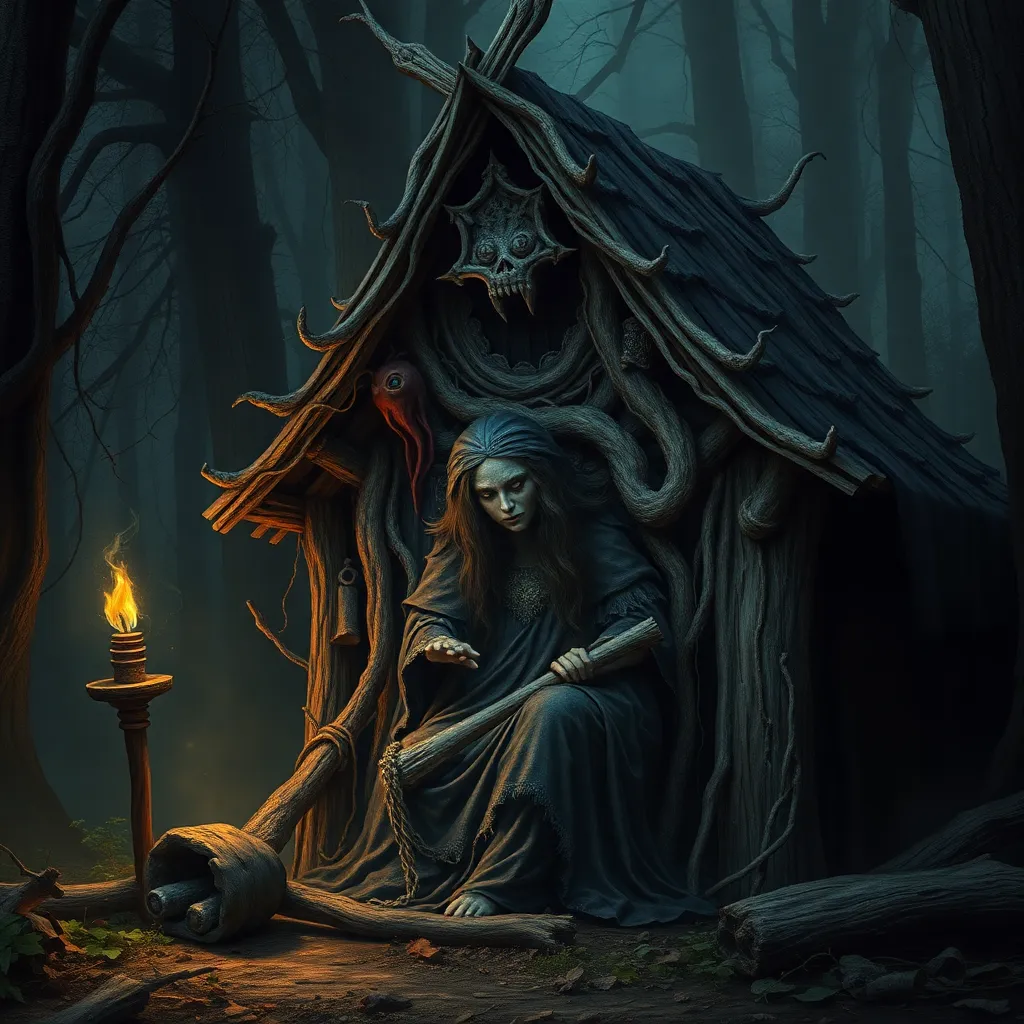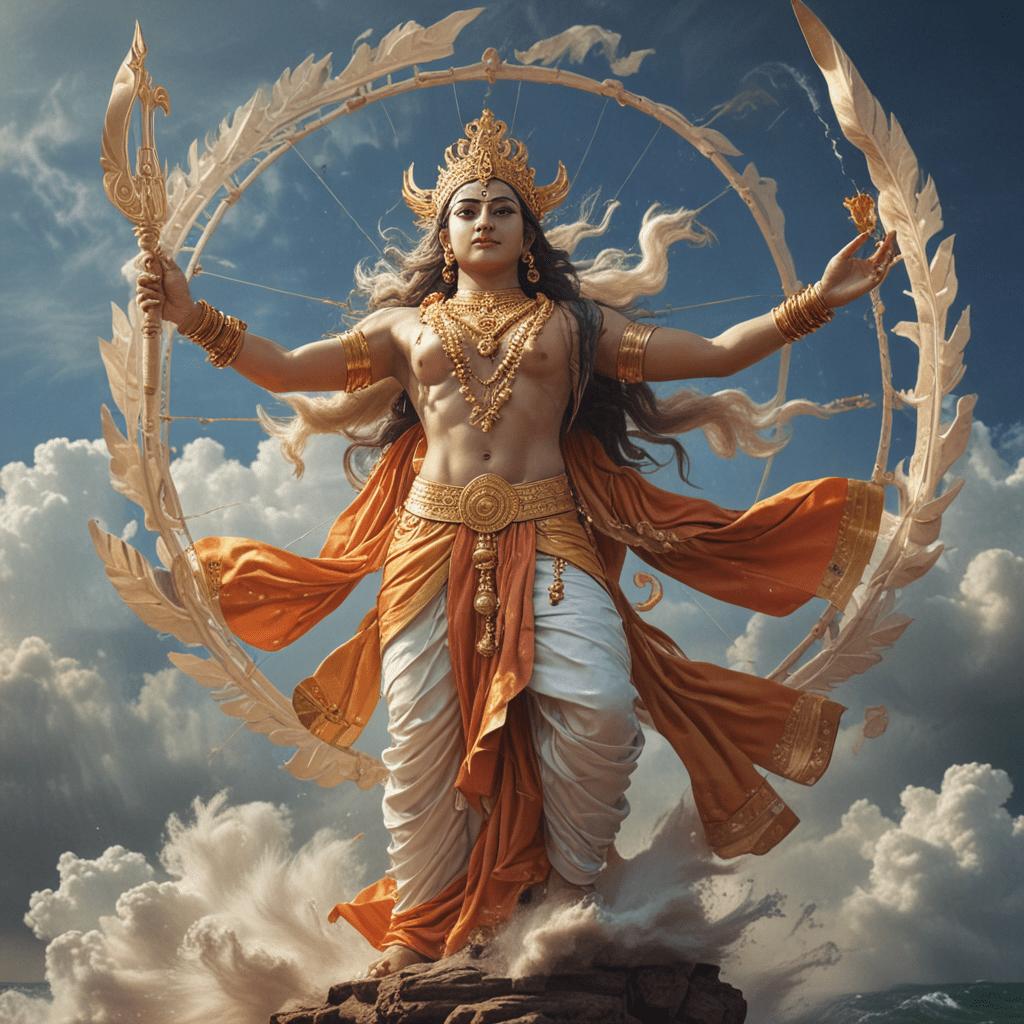The Baba Yaga’s Legacy: Tracing Her Influence in Modern Literature and Art
I. Introduction
Baba Yaga, a prominent figure in Slavic folklore, has captivated audiences for centuries with her enigmatic personality and multifaceted role in stories. Often depicted as a fearsome witch living in a hut that stands on chicken legs, she embodies the paradox of wisdom and danger. Her legacy is significant in contemporary culture, influencing various artistic mediums and literary narratives. This article aims to explore the historical origins of Baba Yaga, her appearances in classical literature, modern interpretations, visual representations, and her broader cultural impact.
II. Historical Origins of Baba Yaga
The roots of Baba Yaga can be traced back to ancient Slavic mythology, where she serves as both a helper and a hindrance to heroes in folklore. Her character is steeped in symbolism, representing the duality of nature and the complexities of the female psyche.
- Folkloric Roots: Baba Yaga appears in various Slavic tales, often as an old woman with supernatural powers. Her origins may be linked to pre-Christian beliefs, where she was associated with nature and the underworld.
- Characteristics: Baba Yaga is typically portrayed as a hag with iron teeth, flying in a mortar while wielding a pestle. She is known for her sharp wit and unpredictable nature, embodying both nurturing and destructive forces.
- Evolution: Over time, the narrative surrounding Baba Yaga has evolved, reflecting societal changes and cultural shifts. From a menacing witch to a symbol of female empowerment, her stories have adapted to resonate with contemporary audiences.
III. Baba Yaga in Classical Literature
In traditional tales and fables, Baba Yaga often represents the threshold between the known and the unknown. Her appearances in various narratives reveal deeper themes of wisdom, danger, and transformation.
- Traditional Tales: Baba Yaga appears in numerous Russian folktales, including “Vasilisa the Beautiful,” where she aids the protagonist on her journey. Her role often challenges the hero, forcing them to confront their fears.
- Literary Themes: The narratives featuring Baba Yaga explore themes of wisdom gained through trials, the danger of underestimating the unknown, and the transformative power of facing adversity.
- Key Works: Prominent collections of Russian folktales, such as Alexander Afanasyev’s “Russian Fairy Tales,” highlight Baba Yaga’s complex character and her impact on the story’s outcome.
IV. Modern Literary Interpretations
Contemporary authors have reimagined Baba Yaga in various ways, breathing new life into her mythos and exploring themes relevant to today’s society.
- Contemporary Authors: Writers like Angela Carter and Marjorie Liu have incorporated Baba Yaga into their works, portraying her as a complex character with depth and agency.
- Differing Portrayals: Recent novels and stories present Baba Yaga as a feminist icon, a misunderstood anti-hero, or a wise mentor, showcasing the versatility of her character.
- Themes: Modern retellings often emphasize themes of feminism, power dynamics, and identity, reflecting contemporary societal issues through the lens of this ancient figure.
V. Baba Yaga in Visual Arts
Baba Yaga’s influence extends beyond literature into the realm of visual arts, where artists interpret her mythos in unique and varied ways.
- Artistic Representations: In painting, sculpture, and performance, Baba Yaga has been depicted in numerous styles, from traditional representations to modern interpretations that convey her dual nature.
- Interpretation of Themes: Artists often explore themes such as the power of nature, femininity, and the balance of good and evil, capturing the complexity of Baba Yaga in their works.
- Notable Works: Exhibitions featuring Baba Yaga-inspired artwork have emerged, showcasing the lasting impact of her character on contemporary artists and their interpretations of folklore.
VI. Influence on Film and Television
Baba Yaga’s presence in modern cinema and television highlights her relevance in contemporary storytelling and character archetypes.
- Portrayal in Media: Films such as “The Witch” and TV shows like “Once Upon a Time” have drawn on Baba Yaga’s character, reimagining her as a complex figure that challenges traditional narratives.
- Narrative Shaping: Baba Yaga’s character has influenced the development of other archetypes in media, often serving as a catalyst for change in the protagonists’ journeys.
- Examples: Notable examples include her appearance in animated films, where she is often portrayed as both a villain and a wise mentor, demonstrating her multifaceted nature.
VII. Cultural Impact and Global Reach
Baba Yaga’s influence extends far beyond Slavic culture, resonating with audiences worldwide and adapting to various cultural contexts.
- Global Influence: Baba Yaga has inspired adaptations in European and American folklore, illustrating the universal themes present in her stories.
- Cultural Adaptations: Various cultures have reinterpreted Baba Yaga’s character, integrating her into local myths and legends, thereby enriching the global storytelling tradition.
- Folklore’s Role: The enduring appeal of Baba Yaga highlights the importance of folklore in preserving cultural identities and fostering connections across different societies.
VIII. Conclusion
Baba Yaga’s legacy in literature and art is a testament to her enduring appeal as a folkloric figure. Her complex character continues to inspire writers, artists, and filmmakers, reflecting the significance of folklore in contemporary society. As we move forward, the study of Baba Yaga offers rich avenues for exploration in popular culture, ensuring that her story remains relevant for generations to come.




